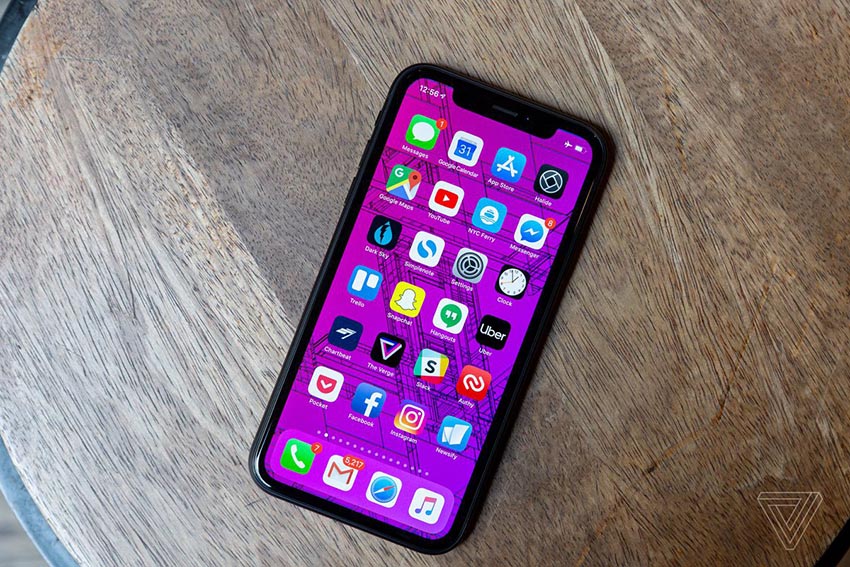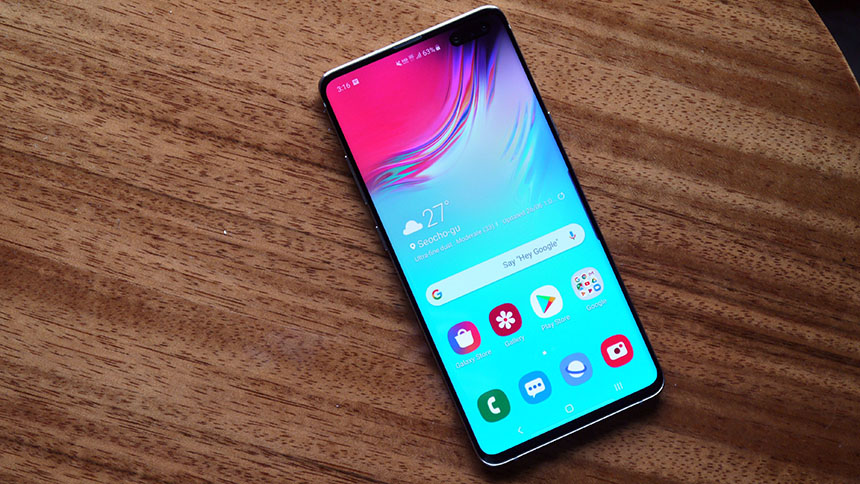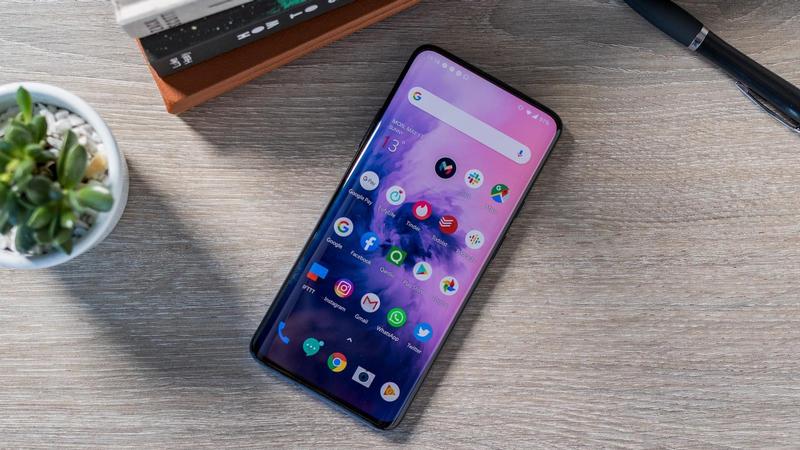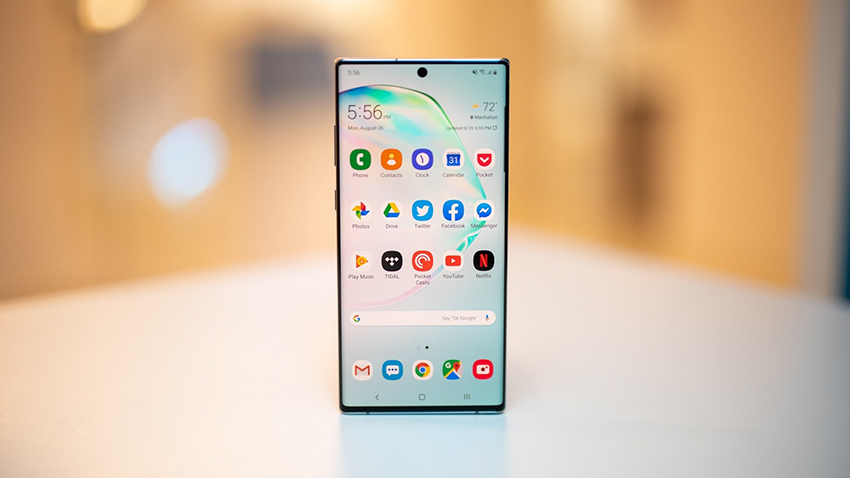When it comes to smartphones, developers are known to be very picky and finicky. They do not directly go for top-of-the-line smartphones but instead go for ones that are pretty close to the top in terms of performance and are value for the money. Here are some of our best smartphone picks for you to consider whenever you look for web developers for hire.
1. iPhone XR

The iPhone XR was launched in 2018, but luckily enough it is a better deal now than when it was launched. For any developer who wants to get one of the latest iPhones mainly for the unparalleled iOS experience, and doesn’t care much for triple cameras and the latest A13 Bionic chip, can easily choose the XR which comes with the A12 processor. Its price has dropped from $749 to only $599, which is $100 less than the base model of the iPhone 11.
The 6.1 inch liquid retina display is great but isn’t as good as the OLED display that comes in the newer phones. It packs all the latest features such as 4 k video recording, IP67 water and dust resistance rating, true-depth camera and face id. However, if you are comparing the XR to the XS or XS Max, and you believe that the photos won’t be as good due to the lack of the dual-lens setup, you can relax. The phone has the same wide-angle sensor as its costlier siblings and also delivers the same Smart HDR functionality.
2. Google Pixel 3a
![]()
Yes we know that the Pixel 4 has been launched already but in case you want to have the vanilla android experience along with the usual updates from Google in a Pixel phone, the Google Pixel 3a sells at a very low price of just around $350 even today on Amazon. As long as you do not need the fastest and latest Pixel, the 3a will do just fine.
Even with the less impressive processor and display, along with the lack of a multi-camera setup, daily usage experience is pretty smooth on this smartphone. Not only does it come almost $300 cheaper than the Pixel 4, but it even beats 4 in certain aspects.
In case you must have a fingerprint sensor or even a 3 mm jack, or a larger battery, you may be surprised to find out that the Pixel 3a sports all the three, while the new Pixel 4 falls behind in each. Unless the 90 Hertz display is a must for you, you can choose the 3a with ease.
The 5.6 inch OLED display, the intelligent software and the premium design in no way give out that this smaller beast is a sub $400 phone. If you look at it from a tech perspective, the Snapdragon 670 is not the fastest, and you will miss out on certain flagship features such as water-resistance and wireless charging. But even then, the phone is a huge bargain among current mid-range smartphones.
While the display isn’t the finest, it is, in fact, the cheapest phone that boasts an OLED display currently. The strongest point of this phone is the night-mode called the “night-sight”. While a few features such as Pixel Visual Core image processing chip is lacking, the night mode is the same as in its higher-end siblings. Among other phones in the same range, the Pixel stands out truly for its photographic prowess as well as its post-processing software. In certain cases, the results of the Pixel 3a even beat the latest Samsung S10.
3. Samsung Galaxy S10e

The best thing about the Galaxy S10E is that it’s a complete and tidy package that shares the same core features as the $1,000 Galaxy S10 Plus, but for a much lower sum. While the S10 sells at $640, the S10E sells close to $500. That is a difference of almost $150 – a major difference. One thing to note is that the Galaxy S10E shares the S10’s core camera and Snapdragon 855 chipset.
Although the display is smaller and of a lesser resolution than the S10’s 6.1 inch 3,040×1,440 pixels screen, the S10E’s 5.8 inch 2,280×1,080 pixels does look just as good to the eyes. And for your comparison, the dimensions are almost the same as the iPhone XS.
The S10E comes with a Gorilla Glass 5 screen, whereas the pricier ones come with Gorilla Glass 6. But you really won’t be able to spot the difference with your naked eyes, and just in case you are worried about the cost of replacing a broken smartphone screen, just use a tempered glass protector.
4. OnePlus 7 Pro

The year 2019 was the first year that OnePlus launched 4 different smartphones, namely the OnePlus 7, 7Pro, 7T and the 7T Pro. Since the OnePlus 7T Pro comes only in the McLaren edition in the USA which costs around $900, and the OnePlus 7 hasn’t even been launched here, the only ones we can sanely choose between when we are on a budget are the 7 Pro and the 7T.
As for the price, the 7T is retailing at $600 at present, while the 7 Pro has dropped to just $500. There’s not much of a noticeable difference between the performance of the OnePlus 7 Pro’s Snapdragon 855 vs the OnePlus 7T’s 855+.
The screen of the 7 Pro is better and the 1440 p resolution beats the 1080p of the 7T. The curved edges are also a delight to use when you stream a lot of videos on your mobile device. Oneplus gives you the macro mode in the 7T, but that’s not a feature you would spend a $100 on. Video stabilization is better in the 7T, while the battery is almost the same. The warp charge is supposed to be faster on the 7T but the difference is minimal, and the 7 Pro charges almost as fast.
The fingerprint sensor is a tad bit faster on the pro. In a way, the 7T is an upgrade from the 6T and not the 7 Pro. So the 7 Pro is still in a league of its own. As long as you don’t mind the pop-up selfie camera and prefer curved edges, the 7 Pro is the fastest Android phone for developers at this budget.
5. Samsung Note 10

The unlocked Note 10 and Note 10 plus retail for around $749 and $900 in the US and you would be surprised to know that this is the first time that Samsung has released two different versions of its yearly Note offering.
The Note 10 plus is a powerhouse, but the 6.3-inch screen of the Note 10 is not easier to use. Also, the actual phone is almost the size of the 5.8-inch iPhone XS. However, the lower end Note 10 does pack only a Full HD display but isn’t very distinguishable from the quad HD display on the Note 10 plus. The S-Pen is now targeted at everyday audiences and developers who would love its motion-sensor based usages.
It can connect via Bluetooth and comes with an accelerometer and a gyroscope. Gestures (called air-actions by Samsung) can be used to do a lot on your phone and new functionalities for it are being deployed with new updates. Amazingly, a cellphone as small as the Samsung Note 10 holds the S-pen. The handwriting recognition system has improved considerably.
Even though the battery is smaller in Note 10, the run-time is pretty close due to the big screen that the Note 10 plus has to run. The depth sensor is missing in Note 10, but there isn’t a big difference in captured photos since the core cameras are the same in both, and both sport a Snapdragon 855 processor.
In case you are a developer, just like me, I believe one of these phones will suit you well, and you can go for any of them, depending on your budget and operating system preferences.